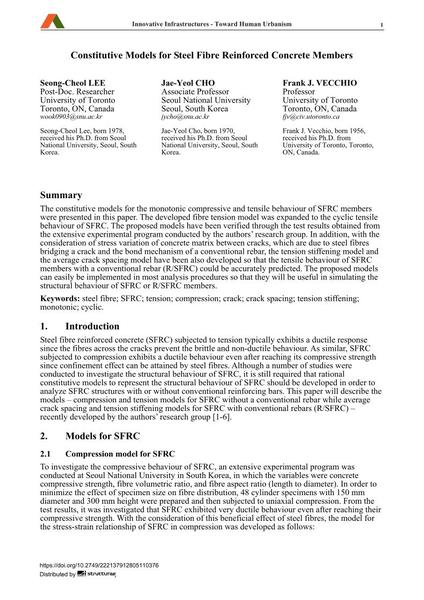Constitutive Models for Steel Fibre Reinforced Concrete Members

|
|
|||||||||||
Bibliografische Angaben
| Autor(en): |
Seong-Cheol Lee
Jae-Yeol Cho Frank J. Vecchio |
||||
|---|---|---|---|---|---|
| Medium: | Tagungsbeitrag | ||||
| Sprache(n): | Englisch | ||||
| Tagung: | 18th IABSE Congress: Innovative Infrastructures – Towards Human Urbanism, Seoul, Korea, 19-21 September 2012 | ||||
| Veröffentlicht in: | IABSE Congress Seoul 2012 | ||||
|
|||||
| Seite(n): | 230-237 | ||||
| Anzahl der Seiten (im PDF): | 8 | ||||
| DOI: | 10.2749/222137912805110376 | ||||
| Abstrakt: |
The constitutive models for the monotonic compressive and tensile behaviour of SFRC members were presented in this paper. The developed fibre tension model was expanded to the cyclic tensile behaviour of SFRC. The proposed models have been verified through the test results obtained from the extensive experimental program conducted by the authors’ research group. In addition, with the consideration of stress variation of concrete matrix between cracks, which are due to steel fibres bridging a crack and the bond mechanism of a conventional rebar, the tension stiffening model and the average crack spacing model have been also developed so that the tensile behaviour of SFRC members with a conventional rebar (R/SFRC) could be accurately predicted. The proposed models can easily be implemented in most analysis procedures so that they will be useful in simulating the structural behaviour of SFRC or R/SFRC members. |
||||
| Stichwörter: |
Riß Zugversteifung Druck Stahlfaser
|
||||
